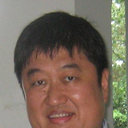Neuropathological studies of patients with possible non-herpetic acute limbic encephalitis and so-called acute juvenile female non-herpetic encephalitis.
Ključne riječi
Sažetak
OBJECTIVE
This study was to clarify the neuropathological findings of non-herpetic acute limbic encephalitis (NHALE) and so-called acute juvenile female non-herpetic encephalitis (AJFNHE).
METHODS
We examined three rare autopsied cases consisting of probable one NHALE and two AJFNHLE. For comparison, we also studied 10 autopsied cases of hippocampal sclerosis mainly caused by anoxia.
RESULTS
In NHALE, neuronal loss with gliosis and microglia/macrophage infiltrations were mainly seen in the CA1 areas in the hippocampus. However, there were no apparent anoxic neuronal changes in the remaining neurons in the CA1, and astrocyte proliferations and microglia/macrophage infiltrations were also observed in the claustrum, while these were mildly present in the basal ganglia. In AJFNHE, pathological findings differed from those of NHALE with regard of the absence of limited pathology in the limbic system, microglia/macrophages widely infiltrated the brain including the hippocampal areas and mild lymphocytic infiltrations were observed in the subarachnoid spaces as well as in the parenchyma.
CONCLUSIONS
The pathomechanism of NHALE and AJFNHE is obscure and autoimmune theory is proposed, however we must collect and examine many autopsied cases in order to clarify the pathomechanism.


